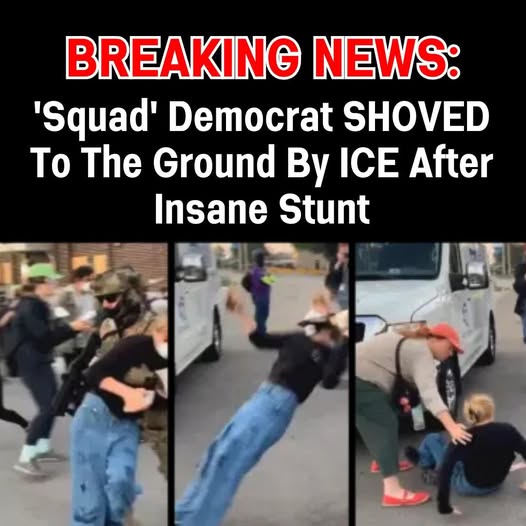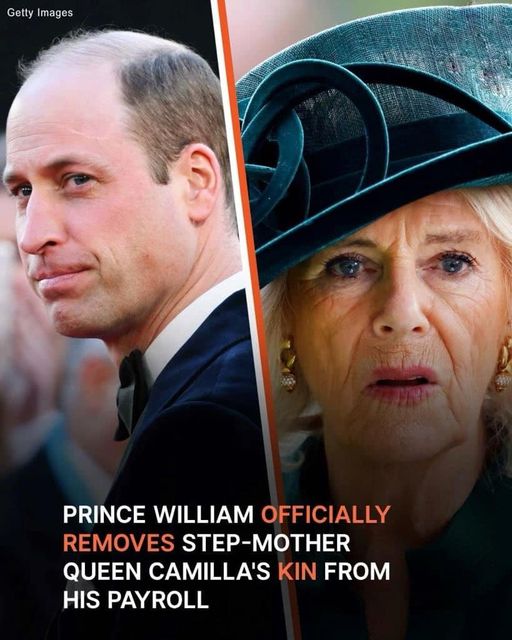A quiet Friday morning in suburban Chicago erupted into chaos when federal immigration agents clashed with protesters outside a controversial processing facility, culminating in the dramatic removal of a Democratic congressional candidate. The confrontation, captured on video and shared widely across social media, has since become one of the most contentious flashpoints in the ongoing national debate over immigration policy, protest tactics, and the boundaries of civil disobedience.
What might have been another routine demonstration quickly spiraled into a defining political moment. Armed federal agents in tactical gear moved against protesters who had physically blocked government vehicles, triggering scenes of chaos that would be replayed for days on cable news. At the center of it all was Kat Abughazaleh, a 26-year-old candidate running for Illinois’ 9th Congressional District.
The Facility at the Center of Controversy
The Immigration and Customs Enforcement (ICE) processing center in Broadview, Illinois, has long been a target for activists. Officially intended as a short-term holding facility, designed to detain individuals for no more than 12 hours before transfer, it has been accused of functioning as a de facto detention site.
Activists allege that detainees, including pregnant women and elderly immigrants, have been held for days or even weeks at a time. Reports describe people sleeping on concrete floors, without access to proper meals or hygiene products. These accounts have turned Broadview into a symbol of what critics say are systemic abuses in the immigration system.
“This is not just about one building,” one local organizer said earlier this year. “It’s about a broader pattern of dehumanization that we cannot ignore.”
The Protest Turns Confrontational
On September 19, demonstrators gathered outside Broadview for what initially appeared to be a standard protest. But as the morning progressed, tensions escalated.
Protesters linked arms across the facility’s driveway, physically blocking ICE vans attempting to leave with detainees. Among them was Abughazaleh, dressed plainly in jeans and a long-sleeved shirt, standing shoulder to shoulder with other activists.
“All of us joined arms, we did not let the van pass,” Abughazaleh later recounted. “ICE came in and tried to drive the car through us. They almost ran over demonstrators.”
Video footage shows her standing defiantly in front of the vehicle as federal agents and security attempted to disperse the crowd. Moments later, tactical officers moved in. What followed was chaos—protesters shoved to the ground, pepper spray deployed, and the congressional candidate herself dragged away by federal agents.
Federal Force and Public Reaction
Witnesses describe a scene that quickly took on the air of a militarized operation. Agents in masks and tactical vests tackled demonstrators and used chemical irritants to disperse the crowd.
Protesters argue the response was excessive. “We were peaceful. We were exercising our rights,” one student demonstrator said. “The tear gas, the pepper spray—it was an overreaction meant to intimidate us.”
ICE has so far declined to issue a detailed statement, fueling speculation about potential charges and the federal government’s handling of the incident. Critics of immigration enforcement say the silence is strategic, allowing public opinion to be shaped by partisan interpretations rather than official fact-finding.
Supporters of ICE counter that protesters crossed a line by physically obstructing federal operations, leaving agents with no choice but to act. “These were not peaceful observers,” one conservative commentator argued. “They were interfering with law enforcement, and that’s illegal.”
Political Stakes and Primary Drama
The political implications are enormous. Abughazaleh, a progressive candidate with a background at the media watchdog group Media Matters, is currently leading in fundraising in a crowded 10-way Democratic primary. The race was already high-stakes after Rep. Jan Schakowsky announced she would not seek reelection, leaving open a safe Democratic seat.
By directly confronting federal agents, Abughazaleh has both electrified supporters and handed ammunition to critics. To progressives, she is a symbol of courage, willing to put her body on the line for immigrant communities. To opponents, she is reckless—perhaps even criminal—for obstructing federal law.
Other candidates were also present, including Evanston mayor Daniel Biss and Bushra Amiwala, further demonstrating how central immigration has become to the race. Biss condemned the ICE response as “aggressive and unnecessary,” underscoring how the incident has reshaped the campaign narrative.
Legal Risks and Uncertain Consequences
While Abughazaleh has leaned into the protest as a badge of honor, the legal risks are real. Federal law—specifically 18 U.S.C. §111—makes it a crime to resist or obstruct officers in the performance of their duties. Convictions can carry prison terms of up to eight years.
In recent years, prosecutors have increasingly applied obstruction statutes to immigration protests. Supporters of this approach argue it is necessary to ensure ICE operations are not disrupted. Civil rights attorneys counter that such prosecutions risk criminalizing protected First Amendment activity.
Whether charges will be filed remains an open question. The high-profile nature of the case, combined with viral footage of a congressional candidate being tackled by federal agents, complicates prosecutorial decisions.
A Growing Pattern of Progressive Confrontation
Abughazaleh’s arrest echoes a broader trend. Across the country, progressive activists and politicians have embraced more confrontational tactics against ICE, often physically blocking vehicles or detention centers.
Earlier this year, Rep. LaMonica McIver of New Jersey was arrested at a detention center protest and now faces trial. Incidents like these suggest a new political strategy: turning direct action into both protest and campaign theater.
Critics see danger in this approach. “Politicians are supposed to make laws, not break them,” one legal analyst said. Supporters argue the opposite—that the moral urgency of immigration injustice demands direct confrontation.
Social Media Fallout
Online, the confrontation has played out like a political Rorschach test.
Progressives flooded Twitter and TikTok with hashtags supporting Abughazaleh, sharing clips of her being dragged away as proof of government overreach. “This is what standing with immigrants looks like,” one supporter wrote.
Conservatives, meanwhile, amplified clips showing protesters physically blocking ICE vehicles. “This is obstruction, plain and simple,” wrote another, demanding her arrest.
The viral nature of the footage has both supercharged Abughazaleh’s fundraising and heightened scrutiny of her tactics, ensuring the episode will remain central to the race for months.
What Comes Next
For Abughazaleh, the Broadview protest could be both career-defining and career-ending. If she successfully frames the incident as a courageous act of civil disobedience, it may galvanize progressive voters and secure her path to Congress. But if federal prosecutors pursue charges—or if moderates see her actions as reckless—it could derail her campaign entirely.
What is certain is that the images from Broadview will not fade quickly. They have already reshaped the Illinois 9th District race, injected new urgency into debates over immigration enforcement, and raised profound questions about how far candidates should go in pursuit of their principles.
In the end, the standoff at Broadview was more than just a clash between ICE and protesters. It was a collision between two competing visions of America—one rooted in law enforcement authority, the other in grassroots resistance. The outcome, both legally and politically, will reverberate well beyond suburban Chicago.

